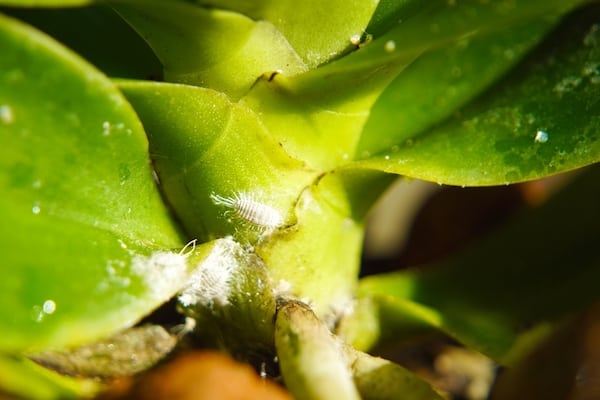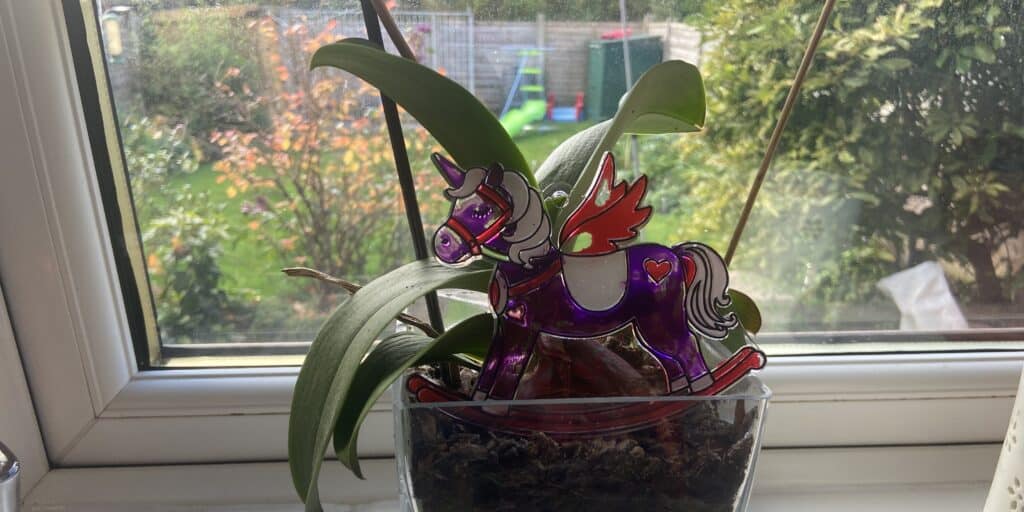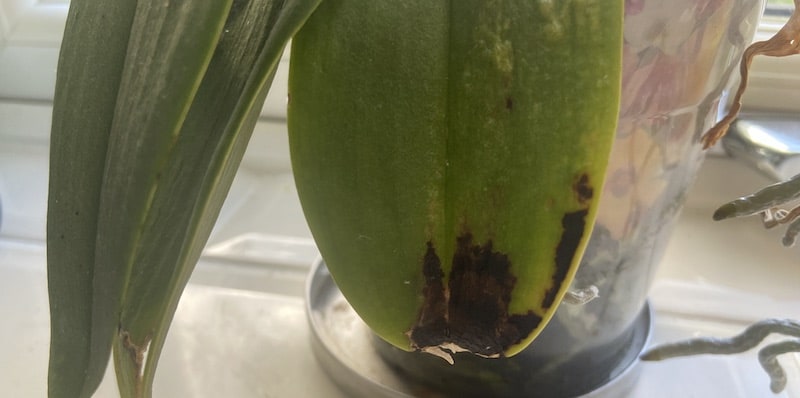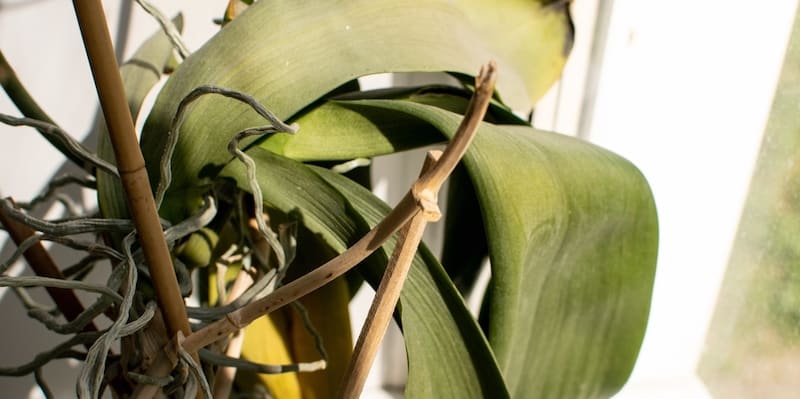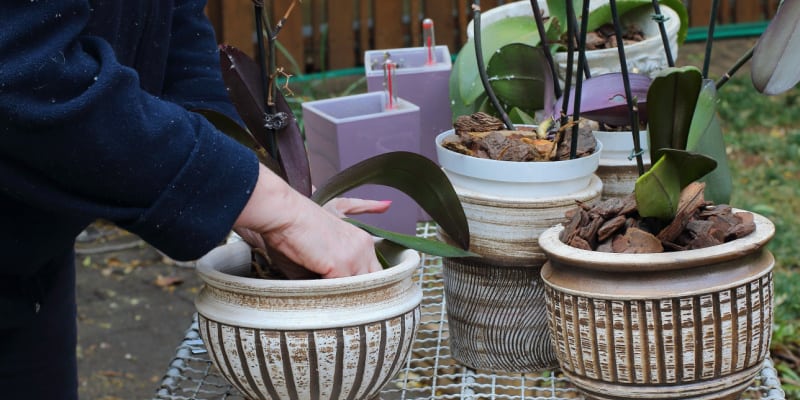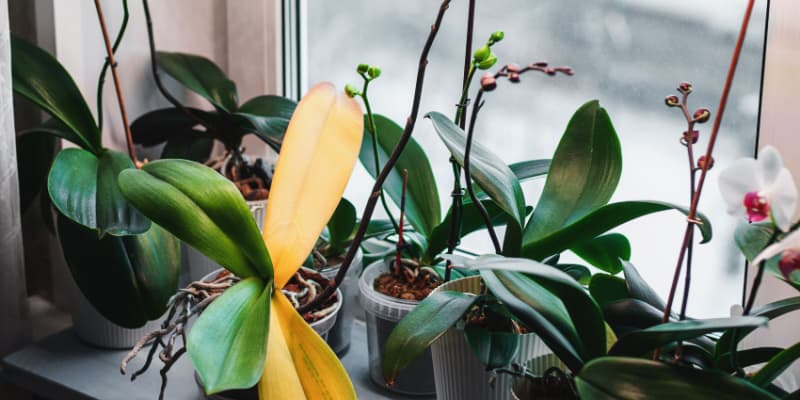
Orchid Problems – Troubleshooting Orchid Issues
Our site is reader supported, this means we may earn a small commission from Amazon and other affiliates when you buy through links on our site.
Despite their reputation for being delicate plants, orchids are not that difficult to grow and care for. That said, they are susceptible to some problems, as with all house plants. I’ve written a series of articles that identify the most common orchid problems and give details about what to do about them. Read on to find out your own orchid’s particular problem and go to the relevant article for more information and how to deal with it. Let’s get started!
How to care for orchids
I have two guides that give information about how to grow orchids successfully and avoid orchid problems as much as possible. See How to grow and care for cymbidium orchids and How to grow and care for orchids for all the details. The second guide is a more general one for orchids.
Sometimes your orchid may grow gangly and not in the direction you want it to. That’s where pruning comes in. When and how to prune orchids gives you the information you need so that your orchid ends up looking visually attractive and not a mess.
If your orchid is looking like it can’t be saved, if it has a few good roots left, you can grow a new plant from the old one. Look at How to propagate an orchid for details.
Pests and diseases that attack orchids
Orchids can successfully be grown with some attention to their care and maintenance. However, they do fall prey to some pests and diseases. If you grow cymbidium orchids, check out Cymbidium orchids and pests for details of what to look out for and how to deal with these problems. Likewise, other orchids have similar problems. See Orchid pests and diseases for more details.
Over-watering orchids is a common problem and this often leads to root rot. I have a separate article, Preventing and treating orchid root rot and orchid crown rot, about this fungal disease.
Flowers and blooming problems
Orchid problems sometimes occur with the blooms. Sometimes your orchid may not flower, and that could be due to a number of reasons. See Why is my cymbidium orchid not flowering? for information about that particular orchid. See Why is my orchid not blooming? for advice for other types of orchids.
Sometimes your orchid may flower perfectly but then the flowers fall off. Head over to Why is my orchid dropping blooms? to find out why and what to do about it.
Your orchid plant looks empty after the end of the blooming season. However, some phalaenopsis orchids can be encouraged to rebloom after they drop their first round of flowers. Learn how to do this in What to do with orchids after blooming?
Leaves and stems issues
Leaves are susceptible to orchid problems. Orchid leaves sometimes turn yellow unexpectedly. Why are my cymbidium leaves turning yellow? explains the major causes for that particular orchid type. Another similar article, Why are my orchid leaves turning yellow?, looks primarily at phalaenopsis orchids.
Orchid leaves may turn other colours. A useful article is How to identify and treat spots on orchid leaves – brown or black. If leaves turning brown is your orchid’s problem, go over to Why are my orchid leaves turning brown?
The problem may be in the stem of your orchid. If it’s turning brown, you need the information in Why is my orchid stem turning brown?
And if it looks like your whole orchid is wilting and poorly, read Why is my orchid wilting?
Sunlight problems
Orchids are generally sun-loving plants. But how much light is enough and what kind of sunlight is right for them to avoid sunburn? I give the answers to this in How much light do orchids need?
Watering problems
Most problems with orchids arise from watering them the wrong way. It’s important to know When and how to water your orchid to keep it strong and healthy. Some orchid experts use an alternate way of watering their plants. Read about whether you should water an orchid with ice cubes to make up your own mind up about this.
The most common orchid problem with watering is overwatering. Everyone should read How do I know if I’m overwatering my orchid? – Seven signs.
Repotting is necessary
Repotting orchids is necessary every two years (for new nutrients) or when they succumb to a disease. See How to repot a cymbidium orchid and When and how to repot an orchid for instructions about how to successfully move your orchid into its new home.
Special care
This section looks at the special care you need to take with orchids, plus has some interesting facts about them.
Find out the answer to Do orchids need special soil? and create the best environment for your orchid plant.
You may be surprised at the answer to the question Are orchids edible? Read the article to find out the common kitchen ingredient that comes from orchids.
And it’s good to know whether orchids are poisonous to cats and dogs. But you do need to take care about the potting mix.
Semi-terrestrial orchids can be mounted on wood instead of grown in a pot. This gives you another way of displaying your plant. See How to grow mounted orchids on wood for all the details.
